Gallery: The Active Sun as Art
Sun Flower
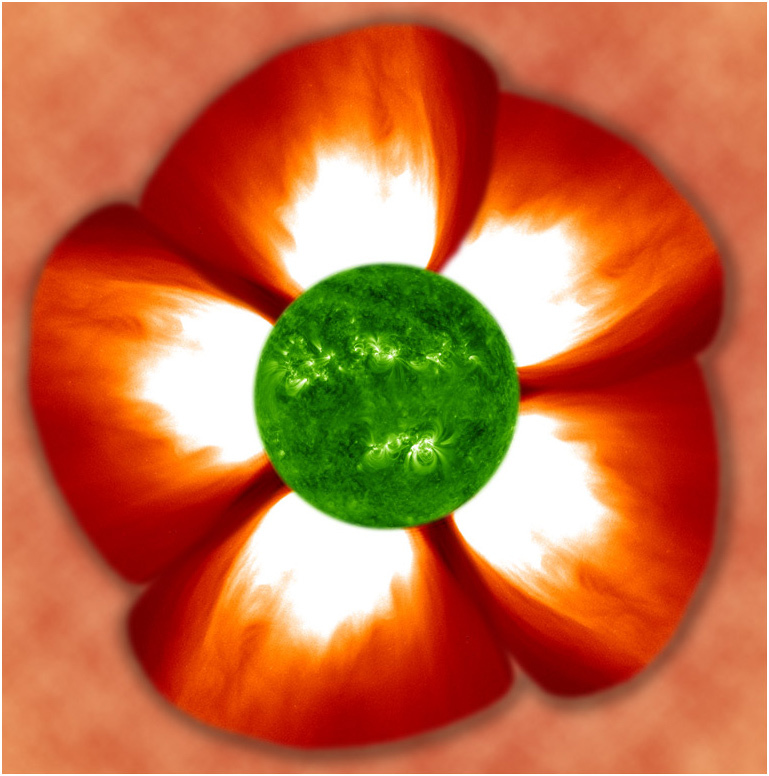
There was something about the bright coronal mass ejection (cropped but un-retouched) in February 2002 that, when copied into a circular pattern, suggested the splash of color found in a flower petal.
Dazzling Red Hot Arc
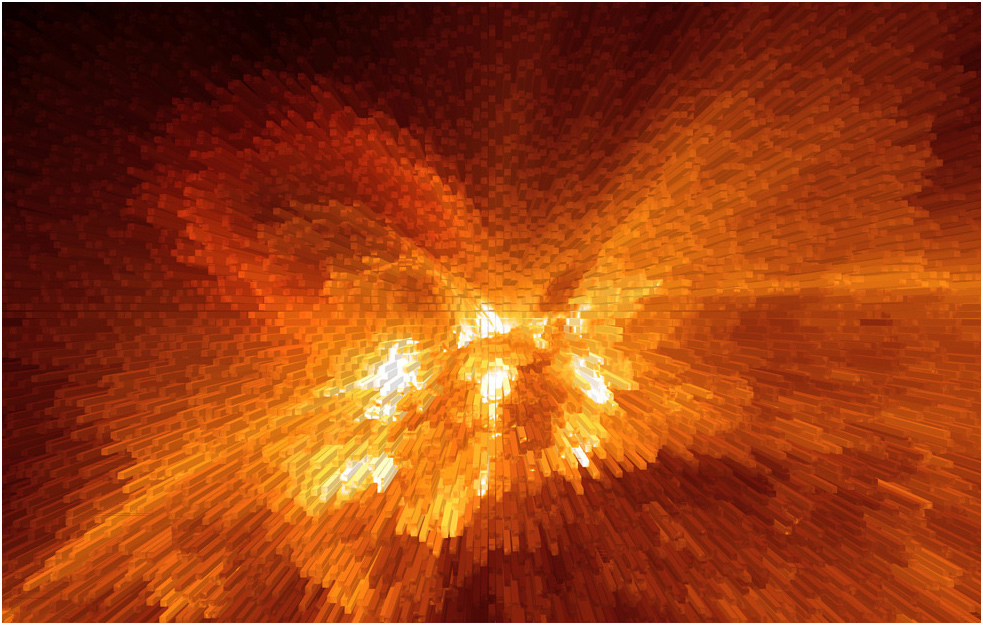
Charged particles spiraling along magnetic field lines rise above several active regions, then were made to zoom out to the viewer. The field lines are in constant motion and often break apart and reconnect. The ionized material imaged here was heated to over one million degrees.
Making an Impression
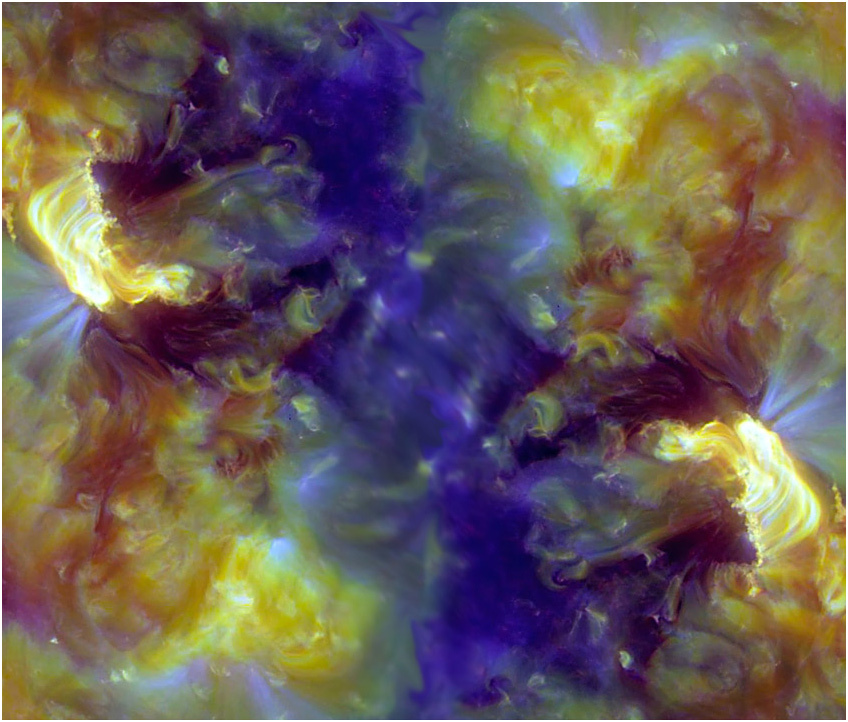
This Monet-like close-up of an erupting active region (brightest area) combines three color-coded wavelengths of extreme UV light.
Observant Sunspots
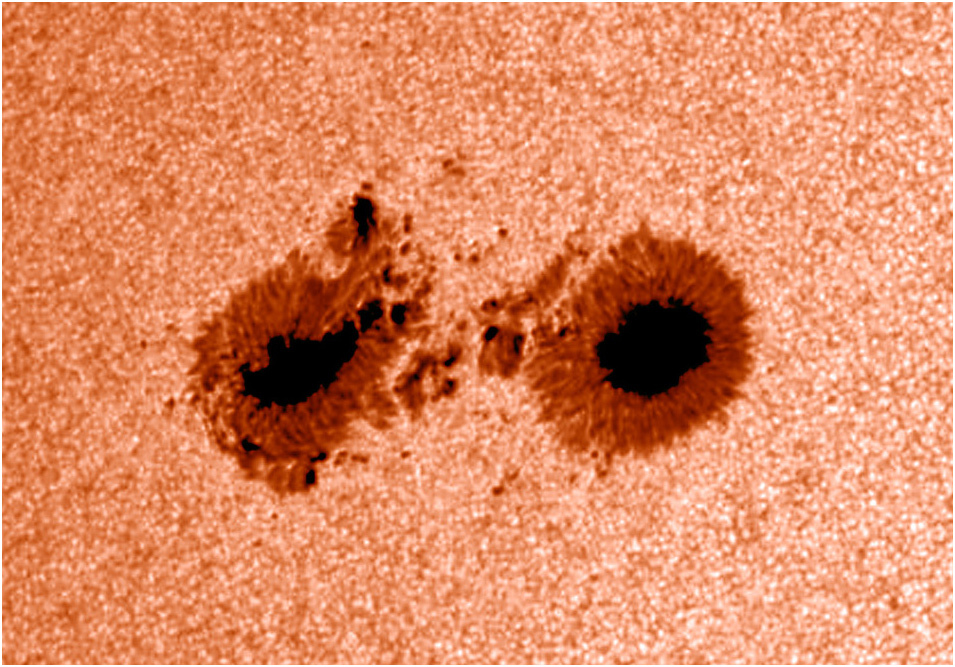
It appears that these pairs of sunspots are peering out from the sun. Sunspots are a little cooler (7,000 degrees F.) and thus appear darker than the sun's surface (10,000 degrees F.). Notice how the surface looks dimpled everywhere you look: each of these granules is the top of a convection cell where hot fluid rises up, spreads out, then sinks back over about 20 minutes. Each granule is about 620 miles across.
Old Man in the Sun
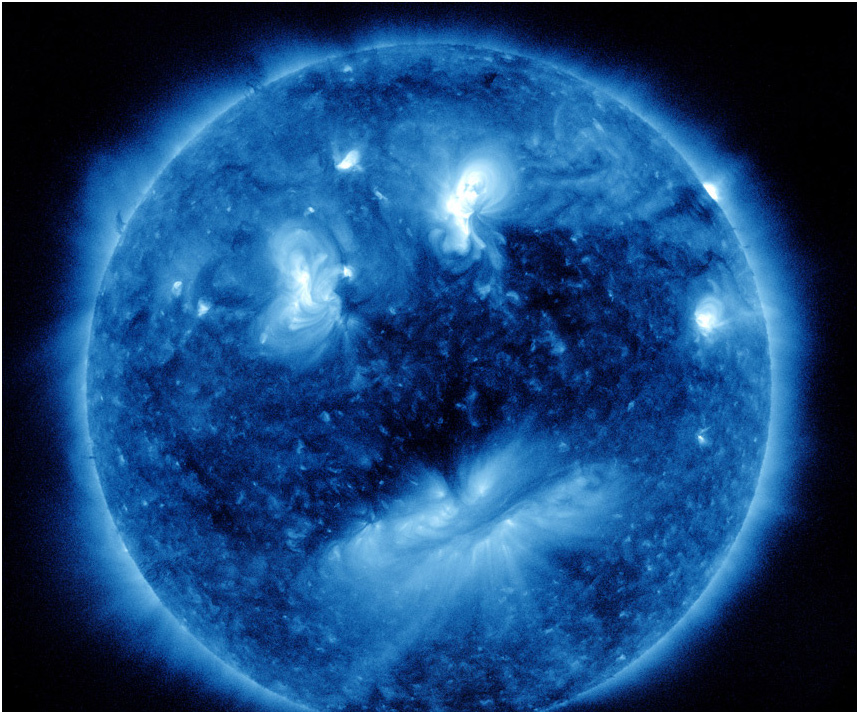
By sheer coincidence several active regions seen in extreme UV light, without any re-arranging, aligned themselves to resemble a contemplative face.
Flash of a Flare
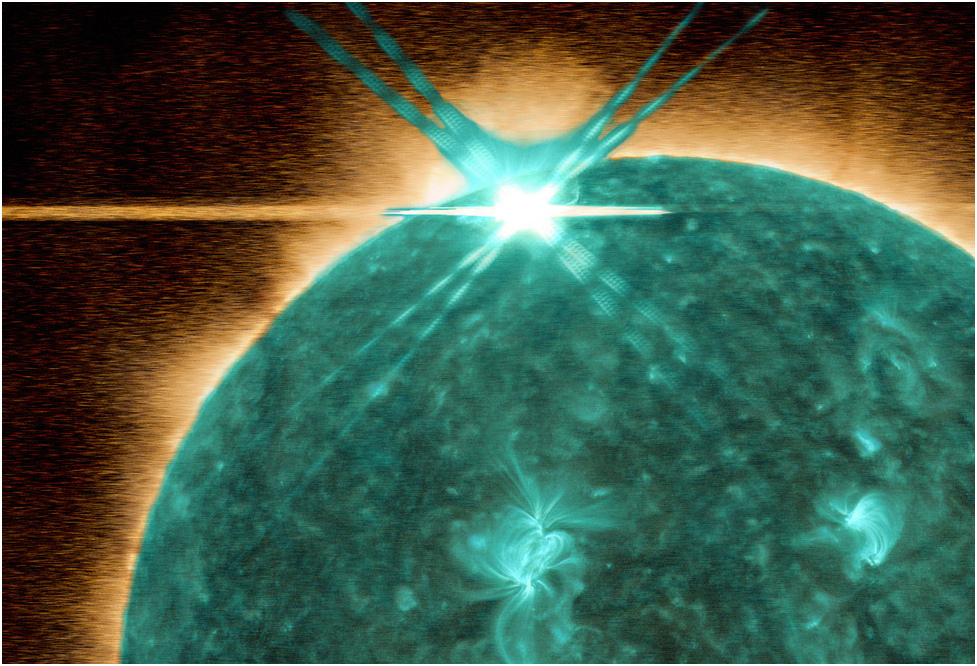
A solar flare on August 9, 2011 overwhelmed the SDO imager with such strong light that it caused the brightness to spread out in broken lines above and below the flare site for just a few minutes.
Volcanic Eruption
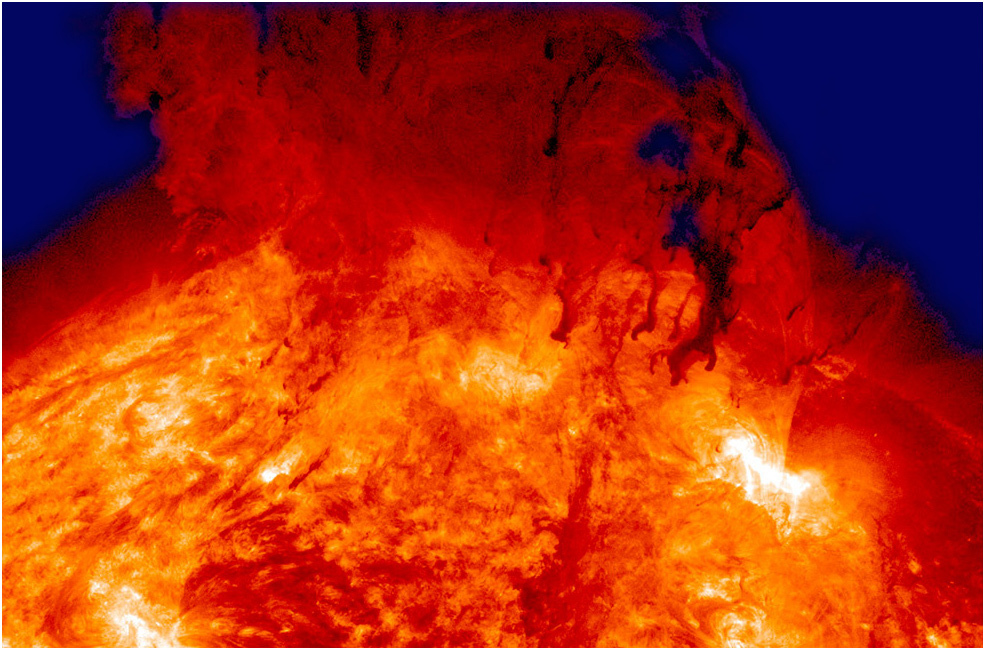
Not a volcano really, but a spectacular solar blast of particles called a coronal mass ejection viewed in extreme UV light.
Get the Space.com Newsletter
Breaking space news, the latest updates on rocket launches, skywatching events and more!
Magnetic Loop Swirls
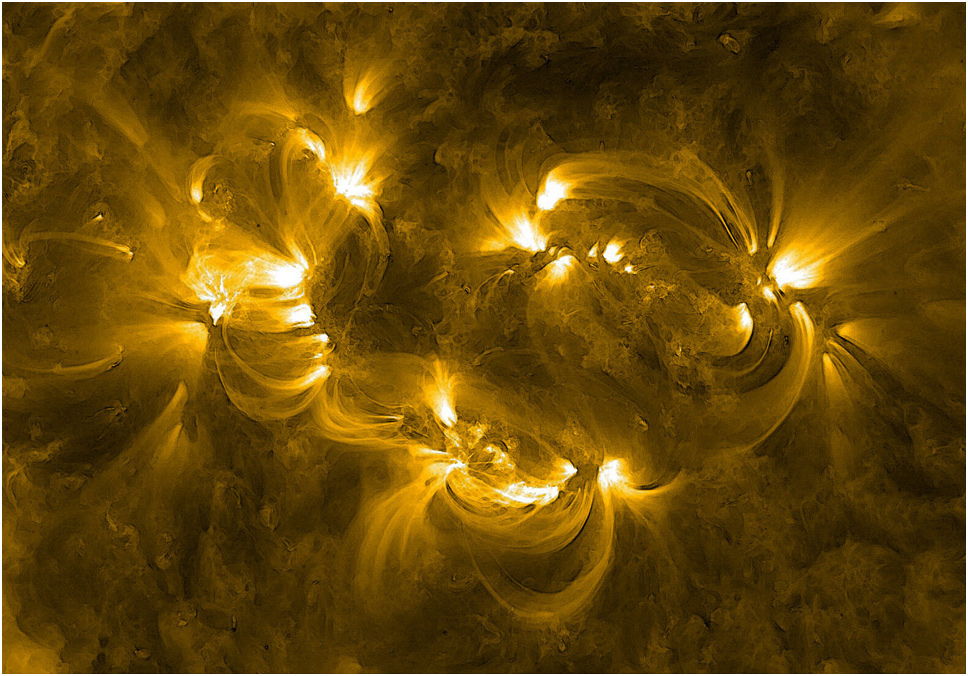
A close up of an active region in extreme UV light reveals tangles of loops and coils of arcs.
Sun Shades of Warhol
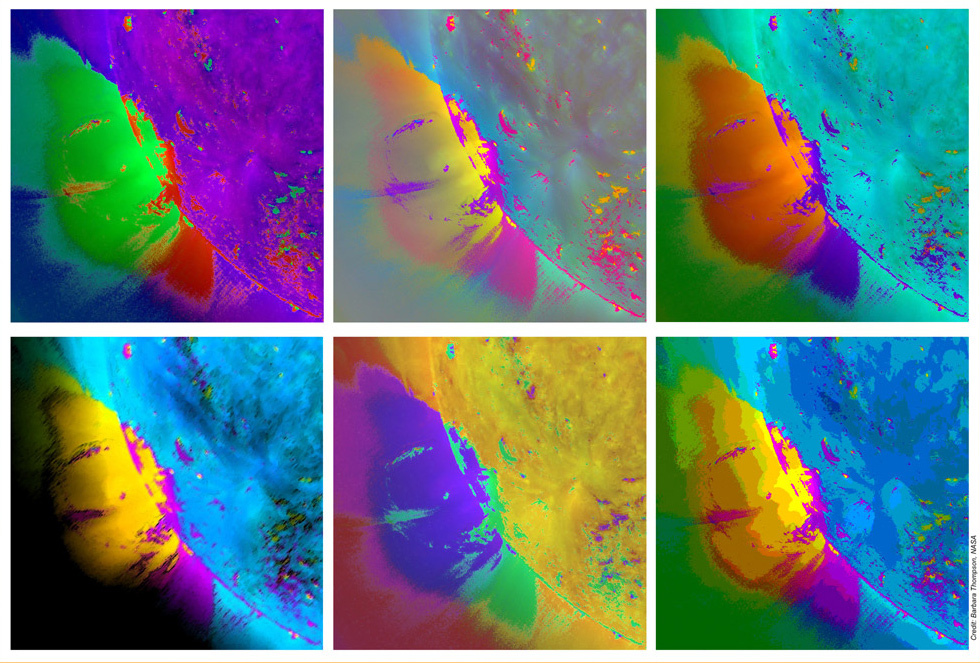
This close-up of a solar eruption seemed to lend itself to a modernistic approach with color tables. The original image combined three wavelengths in extreme UV light.
Let’s Twist Again
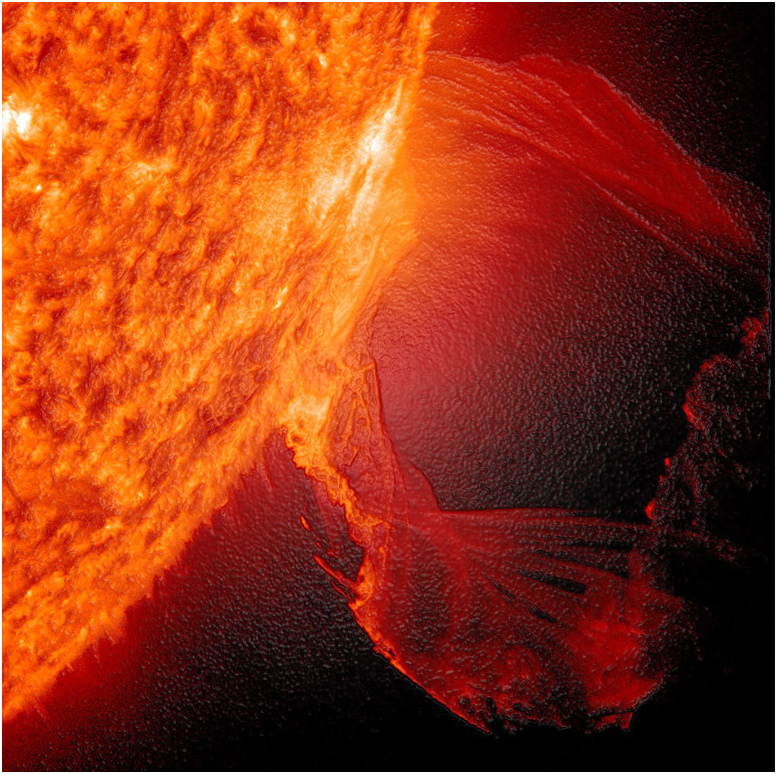
Prominences are huge clouds of relatively cool dense plasma suspended in the sun's hot, thin corona. At times, they can erupt out into space, propelled by magnetic forces from the Sun’s atmosphere. Ultraviolet emission in this wavelength (ions of helium at 304Å) shows the upper chromosphere (not far above the visible surface) at a temperature of about 100,000 degrees F. For a size comparison, the Earth would be no larger than your little fingertip.
Join our Space Forums to keep talking space on the latest missions, night sky and more! And if you have a news tip, correction or comment, let us know at: community@space.com.

Space.com is the premier source of space exploration, innovation and astronomy news, chronicling (and celebrating) humanity's ongoing expansion across the final frontier. Originally founded in 1999, Space.com is, and always has been, the passion of writers and editors who are space fans and also trained journalists. Our current news team consists of Editor-in-Chief Tariq Malik; Editor Hanneke Weitering, Senior Space Writer Mike Wall; Senior Writer Meghan Bartels; Senior Writer Chelsea Gohd, Senior Writer Tereza Pultarova and Staff Writer Alexander Cox, focusing on e-commerce. Senior Producer Steve Spaleta oversees our space videos, with Diana Whitcroft as our Social Media Editor.









